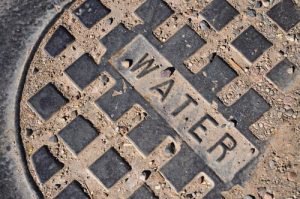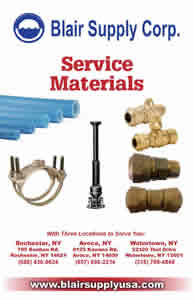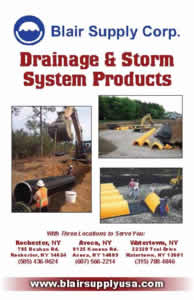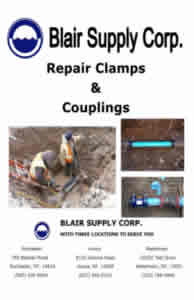Blog
How Does A Municipal Water and Sewer System Work?

Water comes in and out of our homes and buildings so often that we take for granted the conveniences we enjoy in modern life. It takes years of incredible technology, ingenuity, and meticulous planning to build a municipal sewer system network.
So, how does water get from a faraway treatment plant to your home or building and into the tap in front of you? Read on.
How does a water system work?
In municipal water systems, water is drawn from a freshwater source, usually a lake, river, or stream and treated before it is pumped to our homes and businesses. Most systems will include at least two to three stages of filtration to remove bad or dangerous particles such as bacteria, viruses and other debris. Disinfection methods include chlorination and treatment with UV light.
After treatment, the system works by transferring ever-increasing quantities of water into increasingly smaller pipe networks. First, the regional pipes run many miles further than local pipes, and they can be anywhere between 8 to 144 inches wide depending on their location and purpose. These large pipes do most of the work of moving water from the treatment center to population centers.
Regional sewer pipes may rely, in part, on pumps, depending on elevation and angle of the beginning and end point. Pump stations apply pressure to the water in the pipe system in order to give it the momentum to keep moving.
Who pays for water main break?
As mentioned, the water flows through these large pipes, called water mains, that are buried underneath the roads and sidewalks and travel to different destinations. These water mains are connected to your homes, apartments and businesses through smaller pipes, or water lines.
If the water main bursts on public property, it is the municipal government’s job to fix them. However, if water pipelines burst in your home, it is your responsibility to fix them and you or your water and sewer line insurance will usually cover pipe replacement or repair costs.
What is the water treatment process?
It’s very important to keep water clean to prevent contamination or sickness in the general population, which is why water usually goes through several stages of treatment. The rounds of treatment depend on the municipality and how contaminated the water is.
Preliminary treatment
The first stage of treatment removes sand, gravel and other particles from the water. Usually, preliminary treatment involves a filtration system that is either a filter or a sand bed that can be washed and reused.
Primary treatment
The second stage of treatment starts with temporary holding of the water to allow the solids to sink to the bottom, and oily matter to float to the top. The settled and floating material is removed, and the remaining liquid is moved to the next stage of treatment.
Secondary treatment
This stage of treatment removes dissolved and suspended biological matter such as bacteria and potential viruses and the remaining liquid is moved to the next stage of treatment.
Final treatment
In this final stage of treatment, water is treated with chemicals such as chlorine, a yellow-green gas that has a strong oxidising agent, or UV light, and is then filtered prior to being released to the environment.
How does a sewer system work?
If you live in a municipality, pipes from each house or building flow to a sewer main that runs underneath the street and sidewalks. This sewer main pipe line is usually around 3 to 5 feet in diameter. These pipes have intersecting vertical pipes which run up from the main to the surface into a building or a manhole cover which allow access to the pipe system for maintenance.
The sewer main pipes flow progressively into larger and larger pipes, joining together until the wastewater, known as effluent, reaches the treatment plant. In order to help gravity do its job, the treatment plant is usually located in a low-lying area by a stream or riverbed.
Normally, the lay of the land will not completely cooperate, and gravity cannot do all the work. In these cases, the sewer system will include a pumping station to move the wastewater up over a bump or hill.
The sewer lateral is the lowest and widest drain pipe in your home. Most houses’ sewer laterals are buried beneath their foundations. Like other drain pipes, the sewer lateral runs at a downward sloping angle. All the wastewater in your home enters the sewer lateral. The momentum built up from its fall through your drain pipes helps propel it down the lateral’s slope. Your sewer lateral eventually empties out into either a private septic tank or the public municipal sewer system.
How does sewage get to the treatment plants?
Sewage travels through three different sets of pipes to get from a municipal center to the sewage treatment plant. Water that is used in a building is flushed through a building’s pipes until it reaches local sewers which are owned and operated by city and town sewer departments.
There are usually several thousand miles of local sewers pipes if not more in a typical sewage system. Though most of the wastewater flows by gravity, some flat municipalities require pumps to move the sewage along.
What happens to sewage water after treatment?
Physical, chemical, and biological processes, similar to the ones used for tap water, are used to remove contaminants and produce treated wastewater that is safe enough for release into the environment without any fear of ecological damage.
A by-product of sewage treatment is a semi-solid waste or slurry, called sludge which has to undergo further treatment before being suitable for disposal or application to land.
Need a quality pipe coupling in Avoca, Watertown, Rochester or anywhere else in the U.S.?

Blair Supply is a family run business that sells and rents specialty utility equipment. Our mission is to remain an innovator and leader in the ever changing markets of water systems and utility construction.
As a trusted supplier of materials and tools for repairing municipal sewer and water systems, we carry everything from reliable Mueller clamps and couplings for sale to cutting edge Schonstedt magnetic locators. Reach out to Blair Supply Corp. today.






